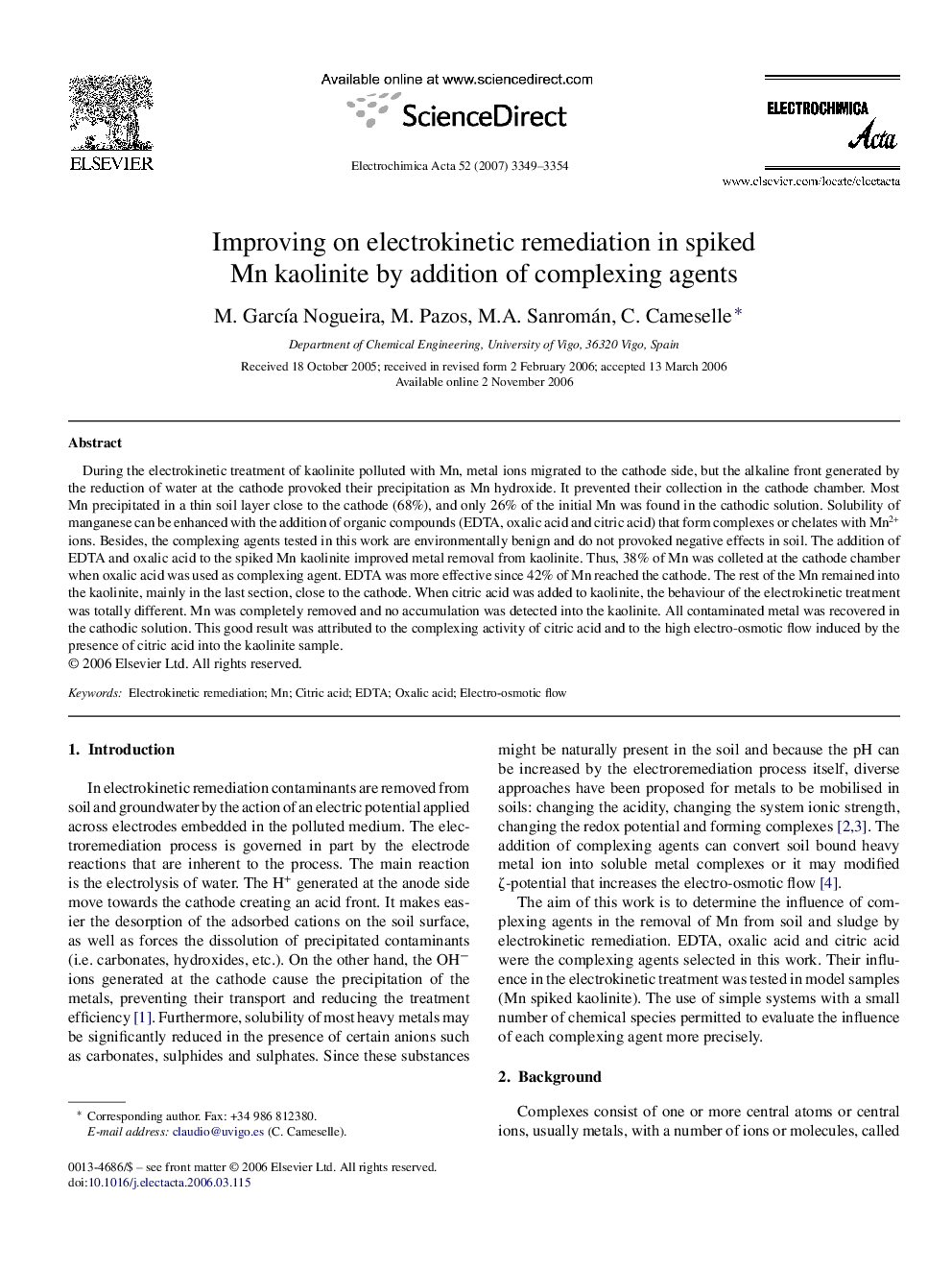| Article ID | Journal | Published Year | Pages | File Type |
|---|---|---|---|---|
| 196235 | Electrochimica Acta | 2007 | 6 Pages |
During the electrokinetic treatment of kaolinite polluted with Mn, metal ions migrated to the cathode side, but the alkaline front generated by the reduction of water at the cathode provoked their precipitation as Mn hydroxide. It prevented their collection in the cathode chamber. Most Mn precipitated in a thin soil layer close to the cathode (68%), and only 26% of the initial Mn was found in the cathodic solution. Solubility of manganese can be enhanced with the addition of organic compounds (EDTA, oxalic acid and citric acid) that form complexes or chelates with Mn2+ ions. Besides, the complexing agents tested in this work are environmentally benign and do not provoked negative effects in soil. The addition of EDTA and oxalic acid to the spiked Mn kaolinite improved metal removal from kaolinite. Thus, 38% of Mn was colleted at the cathode chamber when oxalic acid was used as complexing agent. EDTA was more effective since 42% of Mn reached the cathode. The rest of the Mn remained into the kaolinite, mainly in the last section, close to the cathode. When citric acid was added to kaolinite, the behaviour of the electrokinetic treatment was totally different. Mn was completely removed and no accumulation was detected into the kaolinite. All contaminated metal was recovered in the cathodic solution. This good result was attributed to the complexing activity of citric acid and to the high electro-osmotic flow induced by the presence of citric acid into the kaolinite sample.
